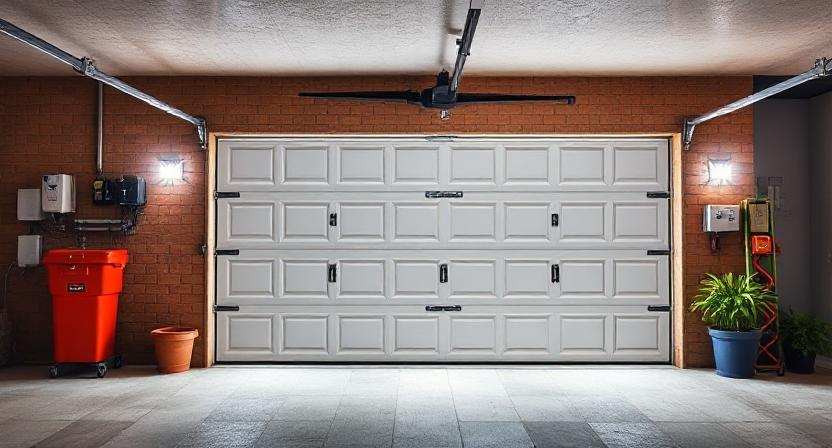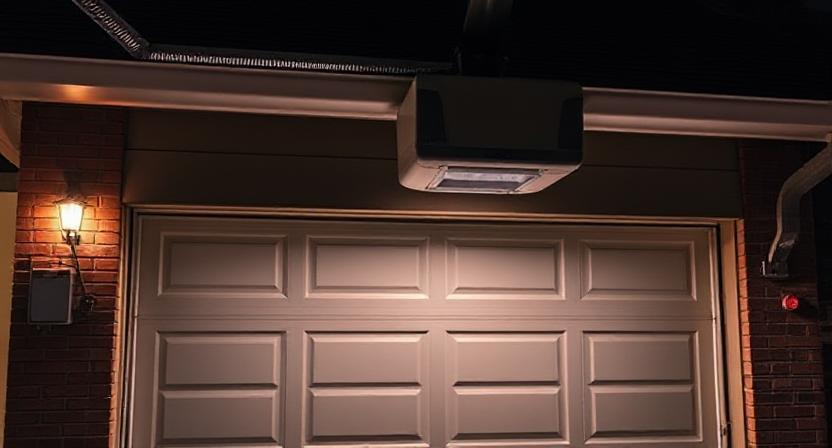If you’ve ever wondered, “How do garage door sensors work?”, you’re not alone. These small but crucial devices play a big role in keeping your family and belongings safe. In this detailed guide, we’ll explain everything you need to know about garage door sensors—how they function, why they’re important, common issues, and how to troubleshoot them.
By the end of this article, you’ll have a clear understanding of garage door safety sensors and how to maintain them for optimal performance.
What Are Garage Door Sensors?
Garage door sensors, also known as photoelectric sensors or safety reversing sensors, are devices installed near the bottom of your garage door tracks. Their primary purpose is to prevent the door from closing if an object, pet, or person is in the way.
These sensors are a mandatory safety feature in all modern garage door openers, as required by the U.S. Consumer Product Safety Commission (CPSC) since 1993.
How Do Garage Door Sensors Work?
Garage door sensors operate using a simple but effective infrared beam system. Here’s how they work step by step:
1. Two Sensors Working Together
- There are two sensors, one on each side of the garage door (about 4-6 inches above the ground).
- One sensor acts as the transmitter (sending an infrared beam).
- The other acts as the receiver (detecting the beam).
2. The Infrared Beam Connection
- When the garage door is closing, the transmitter sends an invisible infrared beam to the receiver.
- If the beam is uninterrupted, the door closes normally.
- If the beam is blocked (by a car, toy, pet, or person), the receiver detects the break and signals the door to stop and reverse.
3. Safety Mechanism Activation
- When the beam is interrupted, the garage door opener immediately stops the closing process.
- The door then reverses back to the open position to prevent accidents.
Why Are Garage Door Sensors Important?
Garage door sensors are a critical safety feature for several reasons:
✅ Prevent Injuries – Stops the door from closing on children or pets.
✅ Avoid Property Damage – Prevents the door from crushing cars, bikes, or other objects.
✅ Comply with Safety Regulations – Required by law to meet safety standards.
✅ Enhance Security – Some advanced sensors can detect intrusions.
Without functioning sensors, your garage door could become a serious hazard.
Common Garage Door Sensor Problems & Fixes
Even though garage door sensors are reliable, they can sometimes malfunction. Here are the most common issues and how to fix them:
1. Sensors Are Misaligned
- Symptoms: The door won’t close, or the sensor lights blink.
- Fix: Adjust the sensors until both LED lights glow steadily.
2. Dirty or Obstructed Lenses
- Symptoms: The door reverses unexpectedly.
- Fix: Clean the sensor lenses with a soft cloth.
3. Wiring Issues
- Symptoms: One or both sensors have no power.
- Fix: Check for loose or damaged wires and reconnect or replace them.
4. Sunlight Interference
- Symptoms: Sensors work at night but fail during the day.
- Fix: Shield the sensors from direct sunlight or adjust their angle.
5. Dead Sensors
- Symptoms: No LED lights at all.
- Fix: Replace the sensors if they no longer respond.
How to Test Your Garage Door Sensors
Testing your sensors is easy and ensures they’re working correctly. Follow these steps:
- Close the Door Manually – Use the wall button to start closing the door.
- Wave an Object Under the Sensors – As the door closes, pass a broomstick or box through the sensor beam.
- Check the Reaction – The door should stop and reverse immediately.
If it doesn’t, your sensors need adjustment or replacement.
How to Align Garage Door Sensors
Misaligned sensors are a common issue. Here’s how to fix them:
- Loosen the Sensor Bracket – Use a screwdriver to slightly loosen the sensor mount.
- Adjust the Angle – Move the sensor until the LED light turns solid (usually green or red).
- Tighten the Bracket – Secure the sensor in place once aligned.
- Test the Door – Ensure the door closes properly and reverses when blocked.
Upgrading to Smart Garage Door Sensors
Modern garage door systems now come with smart sensors that offer additional features:
🔹 Wi-Fi Connectivity – Monitor your garage door from your phone.
🔹 Real-Time Alerts – Get notifications if the door is left open.
🔹 Voice Control – Works with Alexa, Google Assistant, or Siri.
Popular smart garage door sensor brands include:
- MyQ (Chamberlain)
- Tailwind
- GarageMate
FAQs About Garage Door Sensors
1. Why won’t my garage door close, but the lights blink?
This usually means the sensors are misaligned or blocked. Check for obstructions and realign them.
2. Can I bypass garage door sensors?
While possible (by holding down the wall button), it’s not recommended for safety reasons.
3. How long do garage door sensors last?
Most sensors last 10-15 years, but they may need occasional cleaning or adjustment.
4. Why does my garage door close but then reopen?
This could be due to dirty sensors, misalignment, or weak signal strength.
5. Do garage door sensors work in the dark?
Yes, they use infrared beams, which work regardless of lighting conditions.
Final Thoughts
Garage door sensors are a small but vital part of your garage door system. They prevent accidents, protect your belongings, and ensure smooth operation. By understanding how they work and maintaining them properly, you can keep your garage door functioning safely for years.
If your sensors keep malfunctioning, consider cleaning, realigning, or replacing them. For advanced features, upgrading to smart sensors can add convenience and security.
Now that you know how garage door sensors work, you can troubleshoot issues like a pro and keep your home safe!
Need Help with Your Garage Door Sensors?
If you’re still facing issues, consult a professional garage door technician to ensure your system is safe and functional.
Did you find this guide helpful? Share it with friends and family to spread garage door safety awareness!

hello friends
my name is Sumit kumar. I am the owner of this website and I share only garage door and lift master information and only informational posts on my website. And I have written this post myself and have given you only a good guide and information.



1 thought on “How Do Garage Door Sensors Work? 2025 A Complete Guide for Homeowners”